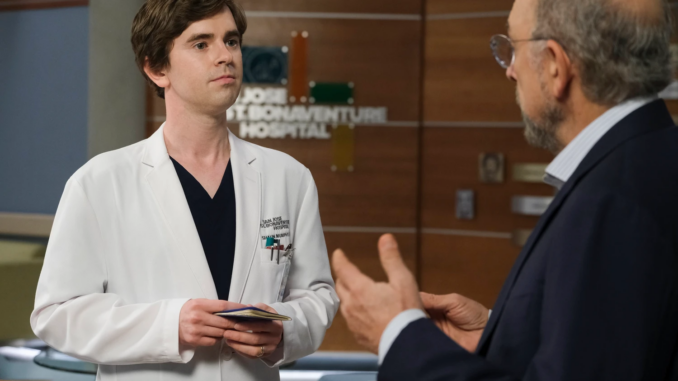
Since he scrubbed in at San Jose St. Bonaventure Hospital more than five years ago, there have been a lot of questions over if Freddie Highmore is autistic in real life and how accurate his portrayal of Dr. Shaun Murphy on The Good Doctor really is.
The Good Doctor is ABC’s medical drama following Dr. Shaun Murphy (Freddie Highmore), a young autistic surgeon with savant syndrome, who relocates from the small city of Casper, Wyoming, to San Jose, California, to take a job at the esteemed San Jose St. Bonaventure Hospital. According to the SSM Health Treffert Center, Savant syndrome is a rare condition in which a person with a developmental condition, including autism, has an amazing ability or talent. The organization notes that the condition can be congenital or acquired later in childhood or adulthood.

Highmore told Variety in 2019 that he felt like it was his “moral responsibility” to play Shaun and also represent a doctor who isn’t a stereotypical television alpha-male. “It’s especially important in today’s world to portray different versions of masculinity, not only the stereotypical ones,” he said. So is Freddie Highmore autistic in real life and how accurate is The Good Doctor? Read on for what Highmore has said about playing an autistic character on The Good Doctor and his response to accusations the show isn’t medically “authentic.”
Is Freddie Highmore autistic in real life like his Good Doctor character?
No, Highmore is not autistic in real life like his Good Doctor character, Dr. Shaun Murphy.. Highmore confirmed in an interview with The Los Angeles Times in 2019 that he does not have autism but researched by talking to people in his personal life with the condition and watching documentaries on autism. The Good Doctor also hired autism consultant Melissa Reiner to make sure that the show’s portrayal of the condition was accurate. Reiner, who has a master’s degree in special education and is a certified consultant in relationship development intervention, is also the founder of AskMelissaNow, an autism and behavioral consulting firm that works with families, individuals and professional organizations. “There are people in my personal life who have autism. It was a condition I was aware of. I [read a lot],” Highmore told The Los Angeles Times. “I saw a brilliant documentary on Netflix called Autism in Love, which is great because it focuses on the most human, deepest emotion that we may feel, which is being in love.”

Highmore also explained how his research on autism informed Shaun’s mannerisms in The Good Doctor. “The way Shaun holds his hands is something that makes him stand out. For me, that came from two places. Kids with autism [used to be] encouraged to clasp their hands together in order not to stim, [a term describing repetitive movements or sounds]. It’s called ‘quiet hands,’” he told The Los Angeles Times. He continued, “Surgeons, in an operating room, consider the front of the body as sterile and often stand in this position [he holds his hands in front of him and above his waist] to keep their hands sterile. So that particular mannerism is sort of half something that’s a trauma, that’s been forced upon him and is also something that’s natural for surgeons to do, so there’s a comfort there too.”
Highmore also told The Los Angeles Times about The Good Doctor creator David Shore’s pitch for the show and how Shaun’s autism would be portrayed from the start. “We spoke mostly about Shaun and the development of his character over time. People who aren’t aware of autism in a personal way or haven’t watched the show sometimes say, ‘How will Shaun change? He’ll always have autism. What’s his arc going to be?’” he said. “So one of the things we discussed early on is, ‘Yes, he’ll always have autism. But he’s going to change continuously as an individual as he adapts to this new world that he finds himself in.’ That was exciting to me: This individual, regardless of whether or not he’s on the spectrum, is going on a journey as a character.”
